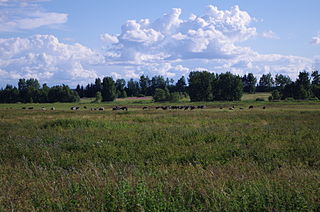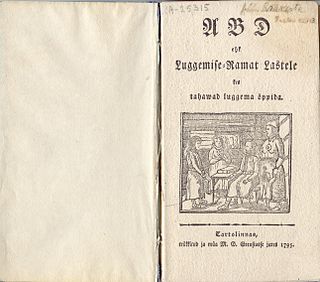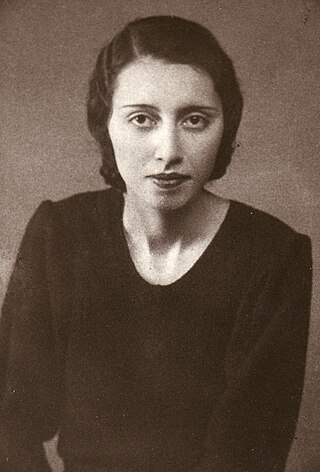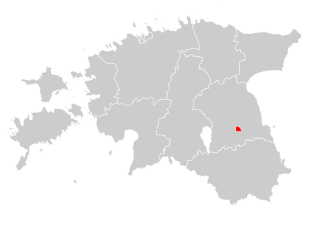Related Research Articles

Tartu is the second largest city in Estonia after Tallinn. Tartu has a population of 97,435. It is 186 kilometres southeast of Tallinn and 245 kilometres northeast of Riga, Latvia. Tartu lies on the Emajõgi river, which connects the two largest lakes in Estonia, Lake Võrtsjärv and Lake Peipus. From the 13th century until the end of the 19th century, Tartu was known in most of the world by variants of its historical name Dorpat.

The University of Tartu is a public research university located in the city of Tartu, Estonia. It is the national university of Estonia. It is also the largest and oldest university in the country. The university was founded under the name of Academia Gustaviana in 1632 by Baron Johan Skytte, the Governor-General of Swedish Livonia, Ingria, and Karelia, with the required ratification provided by King Gustavus Adolphus, shortly before the king's death on 6 November in the Battle of Lützen (1632).

Tartu County is one of 15 counties of Estonia.
A number of professional degrees in dentistry are offered by dental schools in various countries around the world.

Tõnis Lukas is an Estonian politician, former Minister of Culture from 2019 to 2021 and Minister of Education and Research from 1999 to 2002 and from 2007 to 2011.

The history of Jews in Estonia starts with reports of the presence of individual Jews in what is now Estonia from as early as the 14th century.

The history of formal education in Estonia dates back to the 13–14th centuries when the first monastic and cathedral schools were founded. The first primer in the Estonian language was published in 1575. The oldest university is the University of Tartu which was established during the reign of King Gustav II Adolf of Sweden in 1632. The beginnings of the Estonian public education system appeared in the 1680s, largely due to efforts of Bengt Forselius, who also introduced orthographical reforms to written Estonian.

The Estonian Students' Society is the largest and oldest all-male academical student society in Estonia, and is similar to the Baltic German student organizations known as corporations (Corps). It was founded in 1870 at Tartu. It has over 900 members in Estonia and abroad.

The Estonian National Museum founded 1909 in Tartu is a museum devoted to folklorist Jakob Hurt's heritage, to Estonian ethnography and folk art. The first items for the museum were originally collected in the latter part of the 19th century.

The National Archives of Estonia has been the centre of archival administration in Estonia since 1999.

There is a long history of women in dentistry. Women are depicted as assistant dentists in the middle ages. Prior to the 19th century, dentistry was largely not yet a clearly defined and regulated profession with formal educational requirements. Individual female dentists are known from the 18th century. When the profession was regulated in the 19th century, it took a while before women achieved the formal education and permission to engage in dentistry.

Von Bock House is in Ülikooli Street in Tartu in Estonia. The building is owned by Tartu University, and is on the same street as the university's main building. Von Bock house has a mural of the university's main building on one of its walls.

Magnus Kirt is an Estonian retired athlete who competed in the javelin throw. He won the silver medal at the 2019 World Championships. His personal best of 90.61 m is the Estonian record.

The Georgetown University School of Dentistry was the dental school of Georgetown University, located in Washington, D.C. The school was established in 1901 as a department of the School of Medicine and became a standalone school within the university in 1956. In 1987, the school stopped accepting new students and it graduated its last class in 1990.

Volli Kalm was an Estonian geologist who, from 1 July 2012 to his death on 23 December 2017, was the rector of the University of Tartu.

Monika Haukanõmm is an Estonian social worker and politician who has been representing the Estonian Free Party in the Riigikogu since 2015.
Georgi Ivanovich Orlov was a Russian-Estonian physician and politician who was a member of the Riigikogu from 1938 to 1940.
Kairi Look is an Estonian children’s writer and author of short prose.

Electoral district no. 10 is one of the 12 multi-member electoral districts of the Riigikogu, the national legislature of Estonia. The district was established as electoral district no. 9 in 1995 following the re-organisation of electoral districts. It was renamed electoral district no. 10 in 2003 following another re-organisation of electoral districts. It is conterminous with the municipality of Tartu. The district currently elects eight of the 101 members of the Riigikogu using the open party-list proportional representation electoral system. At the 2019 parliamentary election it had 67,525 registered electors.
References
- ↑ Nommela, Rita; Russak, Silvia; Saag, Mare (2017). "Hambaarstide koolitusestja erialaorganisatsioonide tegevusest Eestis1918–2017". Tartu Ülikooli ajaloo küsimusi XLV.
- ↑ Brooks, Janine. 100 Years of Women in the Dental Profession in the UK, 1918-2018. pg. 16. United Kingdom, Cambridge Scholars Publishing, 2019.
- ↑ The National Archives of Estonia. Serre, J, student file nr EAA.402.2.23142
- ↑ The National Archives of Estonia. Serre, Marie Louis student file nr. EAA.402.2.23143